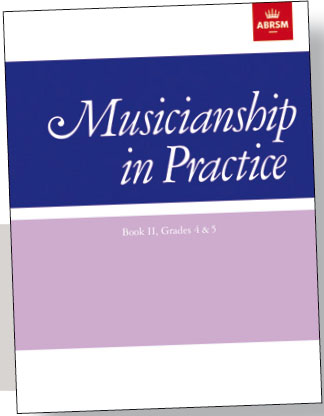
ABRSM is unique among the exam boards in requiring students to achieve a pre-requisite exam before being able to move to the higher grades, namely grades 6, 7 and 8. The go-to that most teachers teach and enter their pupils for is Grade 5 Theory. In this exam, pupils are expected to demonstrate their knowledge of major and minor keys and scales up to six sharps and flats, tenor clef, notation, transposition, intervals, cadences, and terms, including those in German. It is sadly not well known or advertised that pupils may offer alternatives to this with either Grade 5 Jazz on a solo instrument, or Grade 5 Practical Musicianship. I want to discuss the latter.
What does the exam entail?
ABRSM's website explains: ‘Practical Musicianship exams encourage interconnected development of musical listening, reading and playing skills through a holistic approach.’ The assessed exercises include singing and playing from memory, improvising, transposing, sight reading, and interpreting music heard while looking at the printed score. The exam consists of six exercises:
- ▶ In Exercise A, the candidate is asked to sing a four-bar melody heard twice. The melody is then given a third time and the candidate plays it on their instrument.
- ▶ In Exercise B, the candidate may choose whether to either transpose at sight a four-bar melody up or down a tone or semitone, or alternatively sing the lower part of a four-bar phrase.
- ▶ Exercise C is sight reading a melody and includes realisation of ornamentation, dynamics, and expression.
- ▶ Exercise D consists of either improvising a keyboard accompaniment or a melody over given chords. These may be played either solo or the examiner will play the other part. In both, keys are of no more than two sharps or flats and the candidate is given a couple of bars lead in and expected to continue in the same style. The harmonic structure is confined to chords of the tonic, subdominant, dominant and supertonic. Using inversions effectively gets bonus points here.
- ▶ Exercise E is improvising on a given motif. Candidates are expected to play for up to a minute.
- ▶ In F, candidates are given a score in which the examiner will play and make five mistakes in rhythm, pitch, articulation, tempo, and phrasing. The candidate is expected to show where the mistakes were and explain the difference.

What do you need to know?
First impressions might lead teachers and pupils to think that this is an easier option than Grade 5 Theory. I would agree that it is much less academic. However, all my pupils have found the improvisation by far the trickiest part of the exam. Fear of the unknown and years of relying on the music in front of you can combine to instil a jolt of adrenaline. As someone who dislikes an empty music stand, I sympathise. I took lessons in improvising as a ballet pianist a few years ago and the two most important bits of advice I take from that to pupils is 1) Have a structure, however loose. You need a beginning, a middle and an end, and 2) If you can't think of a melody, have a good rhythmic idea, and repeat it while you get back on track!
On the whole, while Grade 5 Theory requires more musical knowledge, candidates have far longer to answer the questions. The alternative is done ‘on the fly’, and pupils do not get a second chance at some of the exercises. I asked my Godson (thank you Felix!) to do a run through with me. He took Grade 5 Theory last year and has never seen this syllabus before. As a chorister and playing his instruments to between Grade 4 and Grade 6 level, he is a well-rounded musician. He enjoyed the active participation but found both improvising tests a challenge. That said, it is fun, and builds on pupils innate listening and theoretical knowledge.
Pupils often tell me that the examiners comment on how much they enjoy taking the exam, as it is not something they get to do often. I have asked a few examiners I know, and they said how lovely it is to see young musicians taking the exam and how their musicality always shines through.
ABRSM publishes the entire Practical Musicianship syllabus in three books. Whether pupils take the exam or not, they are indispensable in building transferable skills in all other aspects of playing an instrument and developing well-rounded musicians.
gb.abrsm.org/en/our-exams/other-assessments/practical-musicianship








